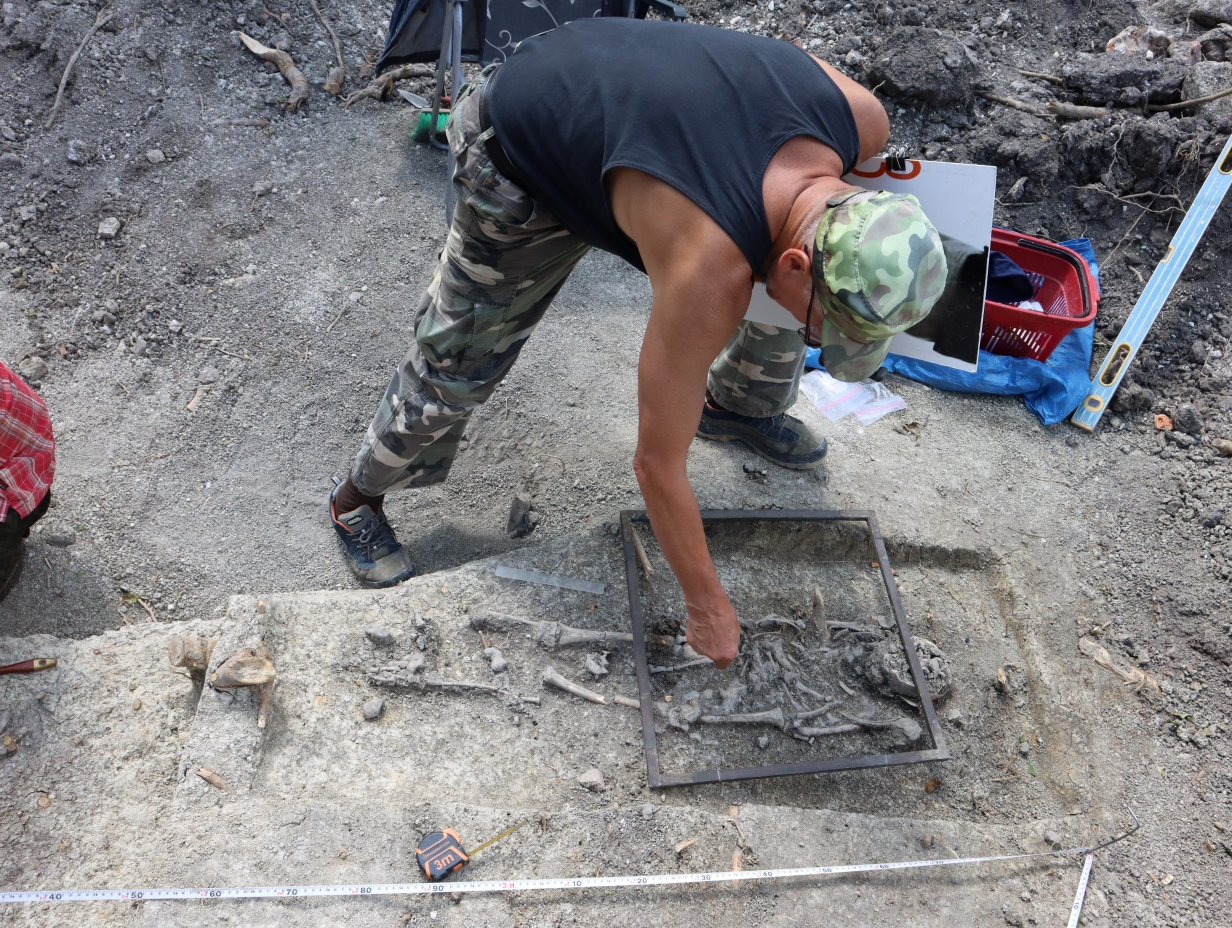Archaeologists from the Lublin Voivodeship Conservator of Monuments have unearthed a “vampiric” burial in the gardens of the Palace of the Uniate bishops, located on Góra Chełmska, Poland.
The palace is part of the cathedral complex of the Basilica of the Nativity of the Blessed Virgin Mary, both of which were constructed during the early 18th century on the site of a former Orthodox church and Basilian Monastery.
According to a press statement issued by the Lubelski Wojewódzki Konserwator Zabytków, archaeologists found the skeletal remains of two children during ground works in the palace gardens.
One of the child burials has been described as “vampiric” due to its distinctive treatment: the skull was intentionally removed and placed face-down, and heavy stones were placed on the body.
These measures were likely intended to prevent the deceased from rising as a revenant, a term used in various European folklore to describe reanimated corpses. Those inflicted with the revenant condition were generally suicide victims, witches, or corpses possessed by a malevolent spirit, or the victim of a vampiric attack.
Two postholes likely served as grave markers, enabling church officials to monitor the deceased for any signs of reanimation.
In an interview with HeritageDaily, the archaeologists noted that both burials likely date from the 13th century AD during the Early Middle Ages. Neither were accompanied with any form of grave goods, however, pieces of ceramics were recovered in situ which was used to date the graves.
They also explained that similar “vampire” burials have been discovered at cemetery sites across Poland, including the burial of a woman in Pień, who was found buried with a padlock on her toe and a scythe placed across her throat.
Header Image Credit : Lublin Voivodeship Conservator of Monuments
Sources : Lublin Voivodeship Conservator of Monuments





